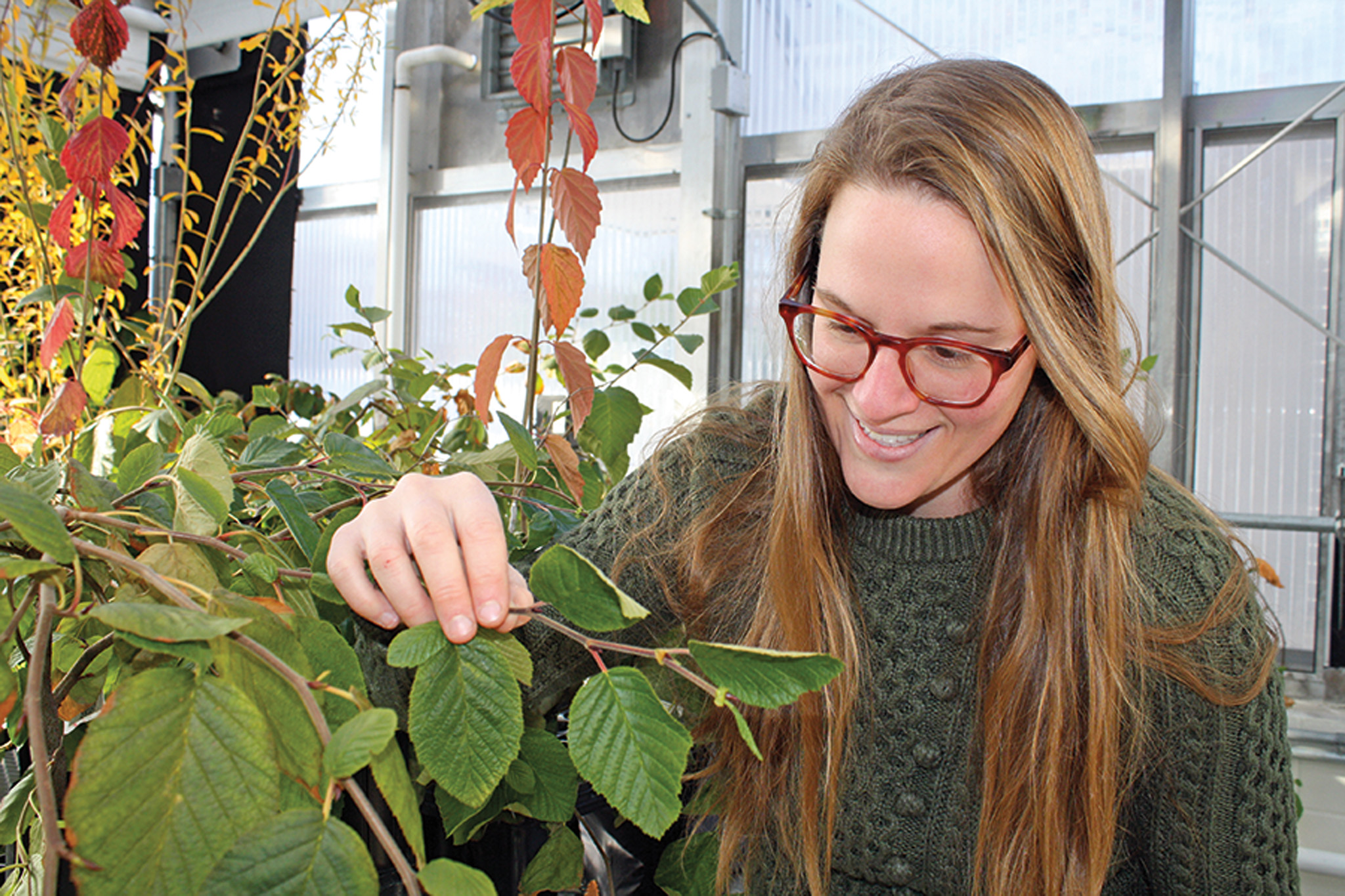
As public awareness about climate change and its mitigation expands, communities like Boston are actively working towards being more “green.” In the news, we hear about massive droughts, floods, wildfires, hurricanes and pests destroying crops. We learn that these events will continue to worsen and by 2080—or even 2050—life in New England will be altered, from the mundane (lower quality maple syrup) to the potentially dire (dramatic increases in Lyme disease). New climate models predict even more extreme warming than previously thought, and though climate scientists debate how this will play out, the message is always the same: mitigating climate change is becoming increasingly more urgent. As a graduate student at the Arnold Arboretum studying the effects of recent climate change, I feel a responsibility to share my work to build awareness and communicate and clarify what is happening to our planet. We are seeing and experiencing the detrimental effects of climate change now and one way to track these changes is through our trees.
The timing of spring’s arrival shapes plant and animal communities and influences ecosystem services from agriculture to carbon sequestration to forest management. Biological spring is when tree and shrub leaf buds burst, and leaves and flowers start to expand and grow. This timing of budburst and leafout—also known as spring phenology—is an essential tool for tracking shifts in climate. Spring phenology is reliant on three cues: over-winter accumulated cold temperatures (chilling), spring warming temperatures (forcing) and increasing daylength (photoperiod). Across the Northern Hemisphere, budburst is advancing—as budburst and leafout are strongly cued by temperature, this trend provides compelling evidence of climate-induced warming. And though temperature is trending warmer, extreme and singular weather events like polar vortexes are still occurring. One such weather event is known as a “false spring,” which is when temperatures rise in late winter only to drop below freezing after budburst has been triggered.
Though spring phenology is advancing with recent climate change, last freeze dates are not anticipated to advance at the same rate. This mismatch in timing could result in more intense false spring events for temperate tree and shrub species and impact some of our crops, like apples. These events can damage buds, leaves, and flowers and, in extreme cases, result in canopy dieback or damage to the water conducting tissue, called the xylem. Thus, false springs can have drastic economic and ecological consequences. Boston springs confound us; temperatures can drop significantly in early February but rise again in early March, just to lead to one last snowstorm at the end of March or early April. Since starting my PhD studies, I have found myself watching the magnolias as they are common victims of these fluctuations: they often bloom early in the season—sometimes as early as February—but then their flowers can sustain significant damage from those late-season snow and ice storms.
Since spring can be so tricky to navigate, temper-ate plants have evolved to minimize false spring dam-age through myriad strategies, with the most effective being avoidance: plants must exhibit flexible spring phenologies in order to maximize growth and minimize false spring risk by timing budburst effectively. Plants with more flexible phenologies can take advantage of a full growing season, without being at risk of freezing temperatures.

In an experiment I ran at the Weld Hill Research and Education Building, I examined the effects of false springs on eight deciduous tree and shrub species, for a total of 480 seedlings. I discovered that trees exposed to freezing temperatures after budburst sustained leaf damage, which ultimately led to shorter growing sea-sons. I also found that false springs cause damage to the shoot apical meristem (the region that allows a plant to grow straight and tall), leading to unique growth patterns. And though these changes in growth habits can be charming, they are largely inefficient and could result in seedling dieback in our forests. Additionally, I evaluated the impacts of less over-winter chilling, an essential cue in spring phenology and one that is predicted to decrease with increasing temperatures. I found that chilling not only affected budburst timing but it also determined the amount of growth an individual experienced over the course of a growing season. Individuals with less over-winter chilling had less total biomass overall.
By sequestering carbon and working to counteract human impact on our planet, our forests are essential to mitigating climate change. If we continue to practice poor habits that harm our environment, our trees will be at risk of having less efficient growing seasons, thus leading to smaller forests and subsequently a reduction in our carbon sinks. Though messages of climate change seem full of despair, all is not lost. Scientists base these predictions on how humanity currently acts, but signifi-cant changes both individually and collectively could set us on a different path. Most importantly, we must continue to grow, study and protect our trees in order to restore the rhythm and balance of our forests.